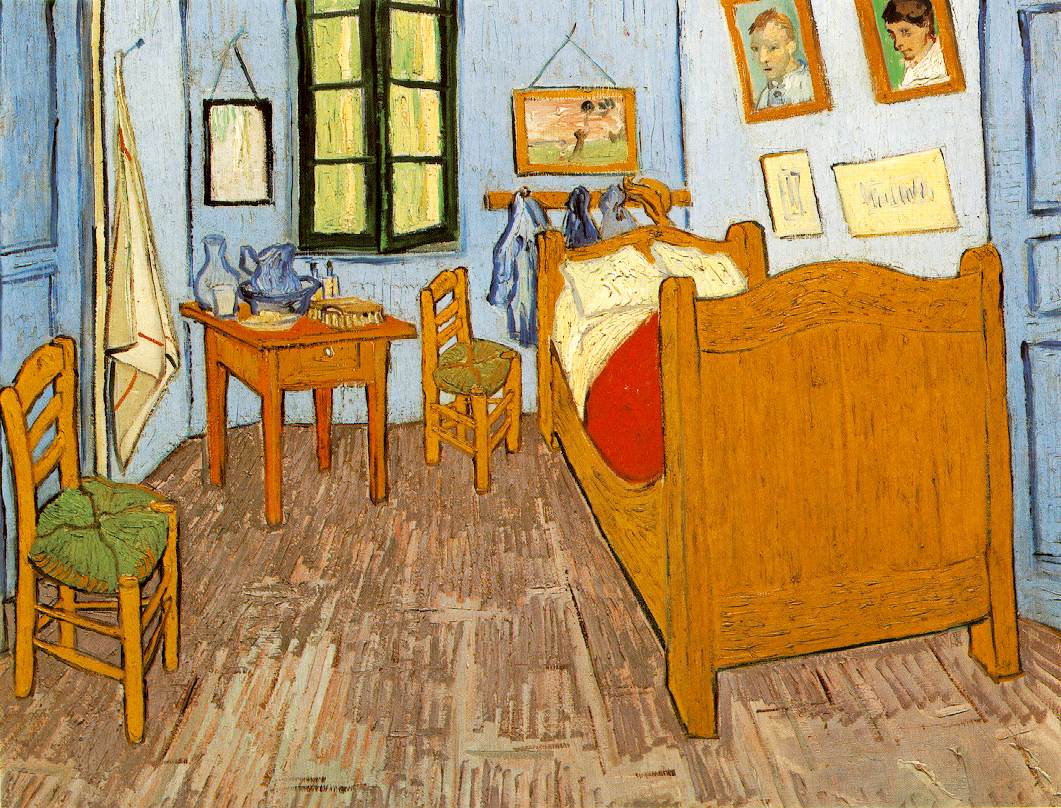
 Vincent Van Gogh (1853 – 1890) was a Dutch Post-Impressionist Master
whose innovative artwork powerfully influenced modern Expressionism,
Fauvism, and early abstraction. Astoundingly prolific, Van Gogh produced
all of his work during a 10-y...ear
period, at one point, creating 150 paintings and drawings within one
year. Painting outdoors, Van Gogh uniquely captured the nighttime
nuances of light and shadow, and was also renowned for his paintings of
sunflowers and irises. Tormented by mental illness for most of his life,
Van Gogh created many of his masterpieces while he was
institutionalized. Although Van Gogh only sold one painting during his
lifetime, he is now regarded as one of the most profoundly influential
artists of the 19th century. Van Gogh's tumultuous friendship with Paul
Gauguin literally changed art history. After living together in Arles,
France, art historians believe Gauguin sliced off Vincent's ear with a
sword - an act previously believed to have been performed by van Gogh
himself in a fit of rage.
Vincent Van Gogh (1853 – 1890) was a Dutch Post-Impressionist Master
whose innovative artwork powerfully influenced modern Expressionism,
Fauvism, and early abstraction. Astoundingly prolific, Van Gogh produced
all of his work during a 10-y...ear
period, at one point, creating 150 paintings and drawings within one
year. Painting outdoors, Van Gogh uniquely captured the nighttime
nuances of light and shadow, and was also renowned for his paintings of
sunflowers and irises. Tormented by mental illness for most of his life,
Van Gogh created many of his masterpieces while he was
institutionalized. Although Van Gogh only sold one painting during his
lifetime, he is now regarded as one of the most profoundly influential
artists of the 19th century. Van Gogh's tumultuous friendship with Paul
Gauguin literally changed art history. After living together in Arles,
France, art historians believe Gauguin sliced off Vincent's ear with a
sword - an act previously believed to have been performed by van Gogh
himself in a fit of rage.Vincent Van Gogh painted many trees during his short career—cypresses, mulberry and olive trees. At his own request, Van Gogh (1853 – 1890) lived in an asylum in Saint-Rémy from 1889-90, ...and while there, he completed many landscapes featuring trees. Both cypresses and olive trees were plentiful in the region, and he found each compelling for different reasons. Olive trees were representative of Provence, and, according to a letter written to his brother, they presented Van Gogh with a challenge: “They are old silver, sometimes with more blue in them, sometimes greenish, bronzed, fading white above a soil which is yellow, pink, violet tinted orange...very difficult."
After painting several compositions with cypresses, Van Gogh expanded the series at his sister Wil’s request. With these depictions of cypress trees, Van Gogh developed a method of instilling landscapes with an ethereal tone through the use of thick impasto and swirling strokes. The same frenetic brushstrokes are applied to the mulberry tree here, and they give the viewer a great sense for the movement Van Gogh saw while painting the tree.



No comments:
Post a Comment